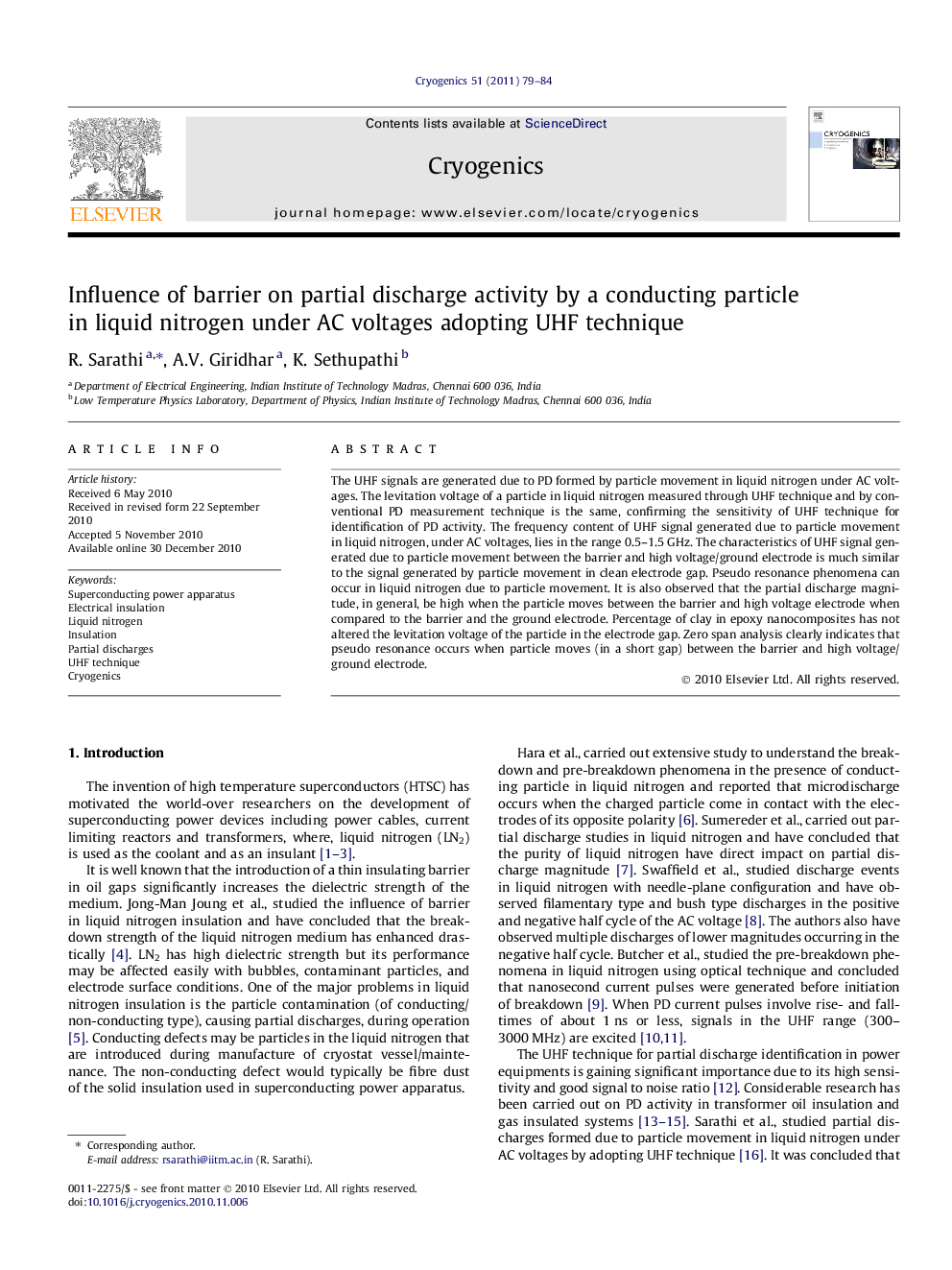| کد مقاله | کد نشریه | سال انتشار | مقاله انگلیسی | نسخه تمام متن |
|---|---|---|---|---|
| 1507714 | 993926 | 2011 | 6 صفحه PDF | دانلود رایگان |

The UHF signals are generated due to PD formed by particle movement in liquid nitrogen under AC voltages. The levitation voltage of a particle in liquid nitrogen measured through UHF technique and by conventional PD measurement technique is the same, confirming the sensitivity of UHF technique for identification of PD activity. The frequency content of UHF signal generated due to particle movement in liquid nitrogen, under AC voltages, lies in the range 0.5–1.5 GHz. The characteristics of UHF signal generated due to particle movement between the barrier and high voltage/ground electrode is much similar to the signal generated by particle movement in clean electrode gap. Pseudo resonance phenomena can occur in liquid nitrogen due to particle movement. It is also observed that the partial discharge magnitude, in general, be high when the particle moves between the barrier and high voltage electrode when compared to the barrier and the ground electrode. Percentage of clay in epoxy nanocomposites has not altered the levitation voltage of the particle in the electrode gap. Zero span analysis clearly indicates that pseudo resonance occurs when particle moves (in a short gap) between the barrier and high voltage/ground electrode.
Research highlights
► The Partial discharge formed due to particle movement in liquid nitrogen radiates UHF signals.
► The levitation voltage of a particle in liquid nitrogen measured through UHF technique and by conventional PD measurement technique is the same, confirming the sensitivity of UHF technique for identification of PD activity.
► The frequency content of UHF signal generated due to particle movement in liquid nitrogen between two electrodes/between barrier and high/ground electrode, under AC voltages, lies in the range 0.5 -1.5 GHz.
► Pseudo resonance phenomena can occur in liquid nitrogen due to particle movement. The partial discharge magnitude, in general, be high when the particle moves between the barrier and high voltage electrode when compared to the barrier and the ground electrode.
► Epoxy nano-composites, with different percentage of clay, has not altered the levitation voltage of the particle in the electrode gap. Zero span analysis clearly indicates formation of pseudo resonance when a particle moves (in a short gap) between the barrier and high voltage/ground electrode.
Journal: Cryogenics - Volume 51, Issue 2, February 2011, Pages 79–84